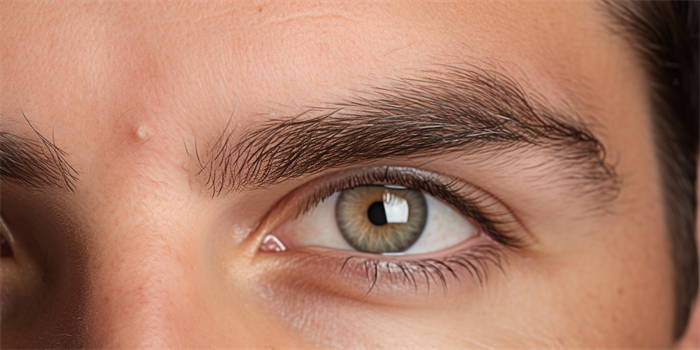Introduction

Microblading has become increasingly popular in recent years as a solution for sparse brows. This semi-permanent makeup technique involves manually depositing pigment into the skin to create hair-like strokes, resulting in fuller and more defined eyebrows. If you're considering microblading, it's essential to understand all aspects of the procedure, from the process itself to aftercare and potential risks. In this comprehensive guide, we will cover everything you need to know about microblading, ensuring you're well-informed before making a decision.
The Process of Microblading
The process of microblading typically involves several steps. First, a consultation with a trained and certified microblading artist is essential. During this consultation, you can discuss your desired brow shape, color, and thickness. Next, the artist will use a handheld tool with tiny needles to create precise incisions in the superficial layer of the skin. Pigment is then meticulously applied to the incisions, mimicking the appearance of individual brow hairs. The entire process can take anywhere from one to three hours, depending on the complexity of the desired outcome.
After the initial microblading session, a touch-up appointment is usually required after four to six weeks. This touch-up allows the artist to refine the shape and color of the brows, ensuring optimal results. The effects of microblading can last anywhere from one to three years, depending on various factors such as skin type, lifestyle, and sun exposure.
Choosing a Microblading Artist
When selecting a microblading artist, it's crucial to choose someone who is certified and experienced in the technique. Look for before and after photos or ask for client testimonials to gauge the artist's skill level. Additionally, ensure that the artist follows strict hygiene and safety protocols, such as using disposable needles and practicing proper sanitization.
Price can vary depending on location and the artist's expertise. On average, microblading can cost between $300 and $800, with touch-up appointments costing around $100 to $300. However, it's important not to base your decision solely on price. Remember, this is a semi-permanent procedure that will have a long-lasting impact on your appearance, so prioritize quality and expertise.
Before the Procedure
Before getting microblading done, there are several important considerations to keep in mind. It's crucial to avoid any blood-thinning medications or supplements, such as aspirin or fish oil, for at least one week before the procedure. This helps minimize the risk of excessive bleeding during the microblading process.
Prior to your appointment, it's recommended to avoid alcohol and caffeine, as these substances can increase sensitivity and contribute to swelling. Additionally, refrain from waxing, threading, or plucking your eyebrows a few days before the procedure to ensure that the artist has enough hair to work with.
During the Procedure
On the day of your microblading appointment, the artist will begin by applying a topical numbing cream to minimize any discomfort. This cream is typically left on for about 20 to 30 minutes before the procedure begins. Once the area is sufficiently numb, the artist will start creating the hair-like strokes using the handheld microblading tool.
While the process is generally considered to be bearable, some clients may experience slight discomfort or a scratching sensation. However, most individuals find the procedure to be quite tolerable, thanks to the numbing cream.
Aftercare
Proper aftercare is crucial to ensure optimal healing and long-lasting results. Immediately after the procedure, the artist will apply a healing ointment to protect the newly microbladed brows and aid in the healing process.
For the first week following microblading, it's important to keep the treated area clean and dry. Avoid excessive sweating, swimming, saunas, and hot tubs during this time. It's also crucial to avoid picking or scratching at the scabs that form, as this can result in pigment loss. Applying a thin layer of the provided ointment in the morning and evening can help promote healing.
Potential Risks and Complications
While microblading is generally considered safe, there are some potential risks and complications to be aware of. Infection is a possibility if proper hygiene practices are not followed during the procedure or in the aftercare period. Allergic reactions to the pigments used are rare but can occur.
Additionally, there is a small chance of dissatisfaction with the results. It's important to have realistic expectations and communicate your desired outcome clearly with your microblading artist during the consultation process. Remember that microblading is a form of art, and results may vary depending on individual factors.
Frequently Asked Questions
1. How long does the microblading procedure take?
The microblading procedure typically takes one to three hours, depending on the complexity of the desired outcome.
2. Does microblading hurt?
While some clients may experience slight discomfort or a scratching sensation, the procedure is generally considered bearable. The topical numbing cream applied beforehand helps minimize any discomfort.
3. Can I wear makeup after microblading?
It's recommended to avoid wearing makeup on the treated area for at least one week after the procedure to allow for proper healing.
4. How long do the results of microblading last?
The effects of microblading can last anywhere from one to three years, depending on various factors such as skin type, lifestyle, and sun exposure.
5. Can I continue to pluck my eyebrows after microblading?
Yes, you can continue to pluck any stray hairs outside the microbladed area. However, avoid plucking hairs within the microbladed shape, as this may disrupt the desired appearance.
Conclusion
Microblading offers a convenient and long-lasting solution for individuals with sparse brows. Understanding the microblading process, choosing a skilled artist, and following proper aftercare instructions are all crucial for achieving optimal results. With this comprehensive guide, you have all the necessary knowledge to make an informed decision and embark on your microblading journey confidently.




